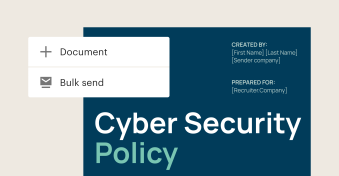Onboarding is a crucial phase in the employment lifecycle.
A smooth, efficient process not only makes new hires feel welcome but also sets the tone for their entire tenure at your company.
It helps integrate newcomers into the company culture and can significantly reduce the time it takes for them to become productive.
Without a smooth onboarding process, new hires may feel less confident in the company as a whole.
In fact, one out of five new hires exit within the first 45 days of a new role.1
Managing onboarding tasks in one place can help ease the transition for new hires and bring more time back into everyone’s day.
With PandaDoc Rooms, you can send new hire paperwork, policies, and agreements electronically, allowing your new hire to complete these time-consuming processes remotely before their first day.
PandaDoc Rooms serves as a centralized hub for all essential documents and tasks, leaving a lasting positive impression on new employees.
Let’s explore how you can leverage this plug-and-play tool to create an even more effective onboarding process.
Leveraging PandaDoc Rooms for a faster onboarding process
PandaDoc Rooms simplifies the onboarding process by providing a single, centralized hub where new hires can access everything they need before they start their first day.
This not only makes your job as an HR professional easier, but also creates a more convenient onboarding experience for new employees.
Crafting an engaging landing page
An engaging landing page can make all the difference when onboarding new team members.
HR teams can use PandaDoc to craft a customized welcome page that greets new employees with relevant information and resources by hosting a private landing page in what we call a room.
Here’s how to get started:
1. Navigate to Rooms on the top left-hand side under the apps section.
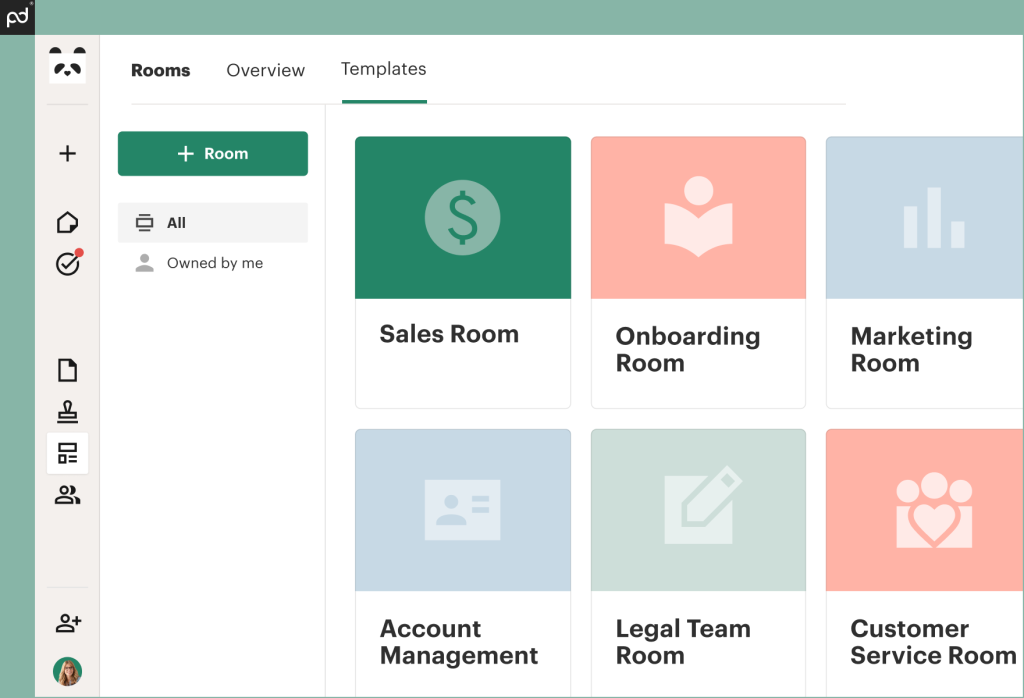
2. Click to create a new room, either from scratch or via a template. To work with a template, navigate to the Templates tab, where you can create a new template or select an existing one.
3. Working collaboratively? Click Settings on the bottom left to enable notifications about any room activity.
4. Then, customize your room by navigating to Home on the left panel and selecting Edit page.
5. Upload a logo and add a brief description to display in the room.
6. Use content blocks such as text, image, video, and table to design the page. Along with adding new blocks, you can also edit or delete existing ones.
7. Include a welcome message, add instructions, and even embed videos or images to convey your company culture.
8. Highlight key contacts like their manager, onboarding buddy, and HR business partner.
9. Add key documents by navigating to Documents and files on the left. Then click +Add to add your existing PandaDoc templates, upload new files, or add links to important collateral. Clicking into a PandaDoc template-based document, you’ll find that all the variables have been filled in and all the fields are assigned to the correct recipients. We’ll cover documents more below.
10. When you’re done adding content, select Publish at the top right to share the room with all members.
Personalization goes a long way in making new hires feel valued.
Tailor the welcome page to include specific information relevant to the employee’s role and department.
This not only makes your job as an HR professional easier but also creates an impressive onboarding experience for new employees — as does seamlessness throughout every touchpoint with Rooms.
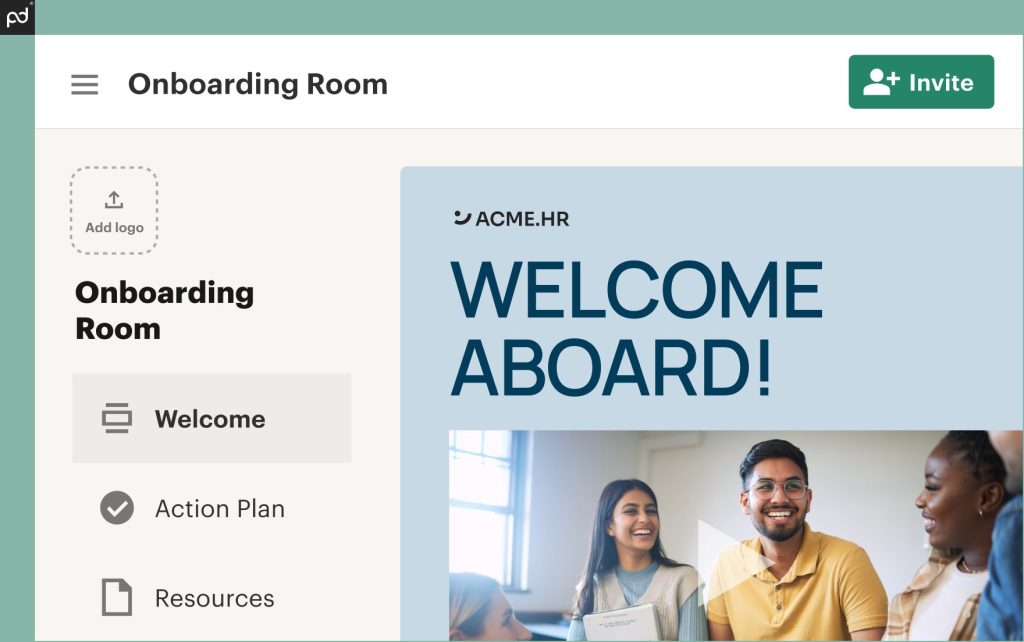
Creating a clear onboarding path
A clear and structured onboarding plan is vital to set any new hire up for success.
With PandaDoc, you can outline easy-to-follow steps for new hires, ensuring they know exactly what to do and when.
Including tasks like reviewing company policies, connecting with colleagues, and completing essential forms like I-9s only makes the process easier.
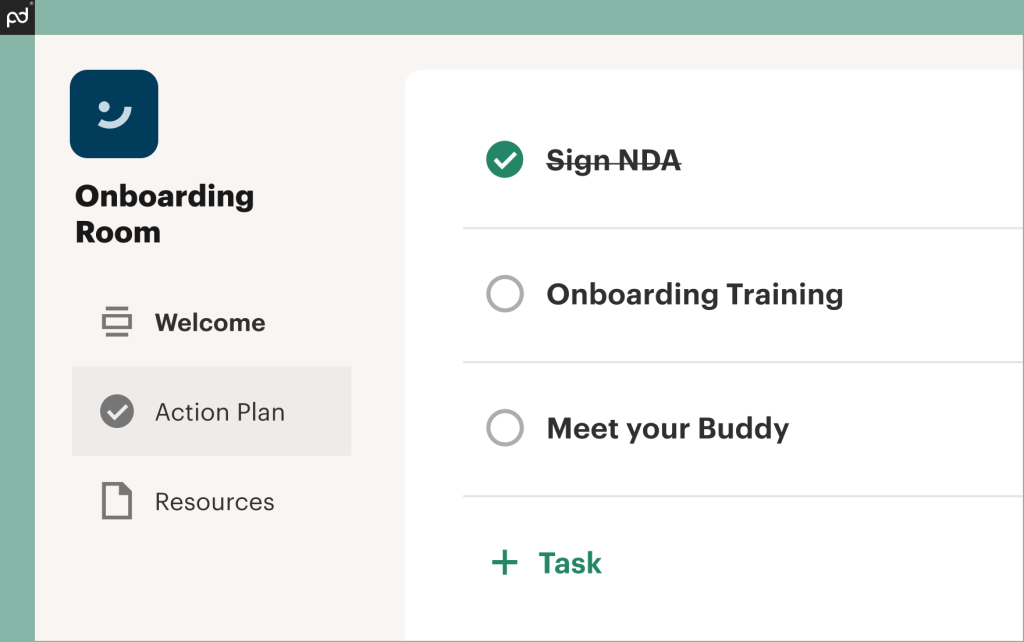
As we covered earlier, you can easily collaborate to support your new hires in a centralized, customizable space with PandaDoc Rooms.
This not only speeds up onboarding but also saves time on follow-ups. Notifications keep everyone in the loop, ensuring every task is completed.
Here’s how to create tasks within a room:
- Select +Task and begin typing the Task name field.
- Hover over the task and select Details to assign it, set due dates, and attach files.
- Choose to assign tasks to all room members, which will make them visible to everyone in the room, or to specific individuals. Or leave them unassigned and only visible to you.
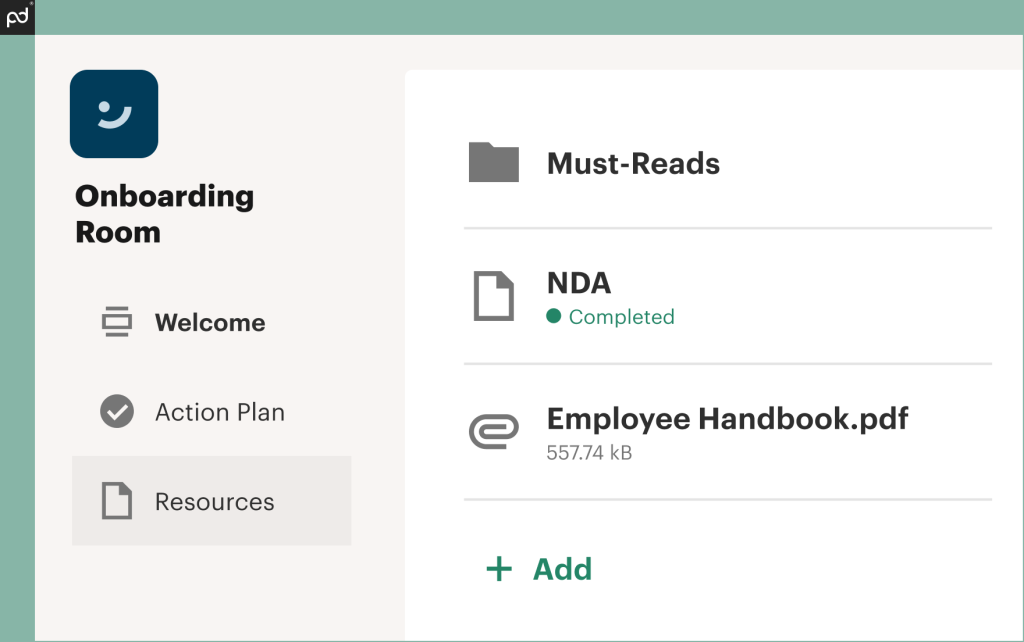
A well-organized onboarding path helps new hires feel more engaged and less overwhelmed by their new role.
When employees know what to expect and have clear instructions, they are more likely to stay motivated and complete their tasks on-time.
Centralizing essential documents
Managing all the necessary documents during onboarding can be a hassle.
PandaDoc simplifies this by consolidating all essential documents within the resources section.
This includes offer letters, employment contracts, employee NDAs, and the employee handbook.
PandaDoc offers a variety of HR templates that you can customize to fit your needs, such as:
- Simple Job Offer Letter Template
- Employee Confidentiality Agreement Template
- Employee Retention Agreement Template
- Employee Performance Review Template
- Employee NDA Template
By centralizing all the necessary documentation, new employees have a single, easy-to-access source of truth for everything they need to read, eSign, and download for themselves before they start in their new role.
Tracking progress and ensuring compliance
PandaDoc makes it easy to track the onboarding completion status of new hires, allowing you to flag unsigned documents or incomplete tasks and get them completed ASAP.
This reduces compliance risks and ensures that all necessary steps are completed on time.
As a room creator (owner), you’ll receive email notifications about activity in the room, including:
- The first time (and every time after that) a new hire opens the room
- Document and file views, downloads, and completions
- New member invitations
- Task assignments and completions
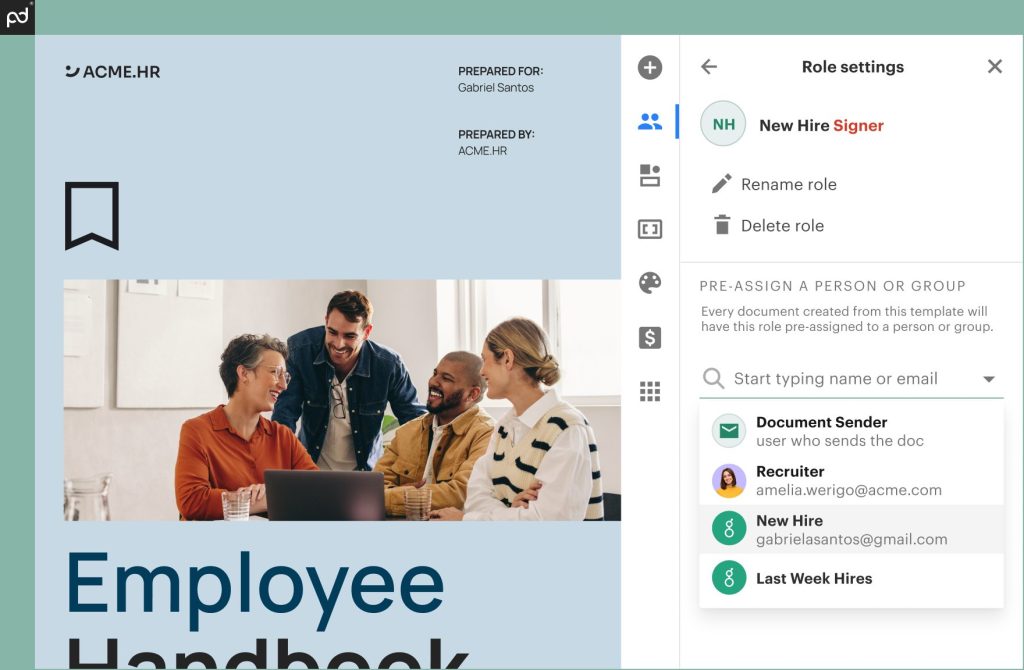
These notifications and insights give you a bird’s-eye view of the onboarding process and allow you to step in and offer support exactly when it’s needed.
Ready to transform your onboarding with PandaDoc?
By centralizing documents, automating notifications, and providing clear task management, PandaDoc does more than speed up onboarding — we transform it.
New hires can become productive and valuable team members faster than ever.
Meanwhile, automation and centralization frees your HR team from manual follow-ups and document chasing.
The result?
A smoother, more efficient process that welcomes your new hires and frees your HR professionals to focus on more strategic tasks, ultimately benefiting the organization as a whole.

